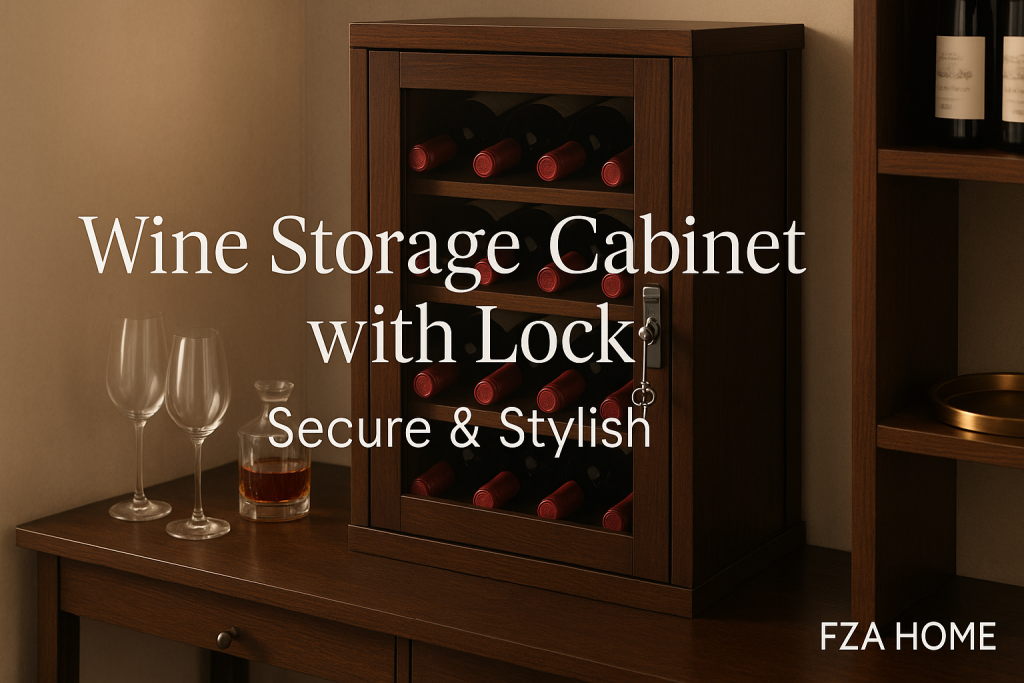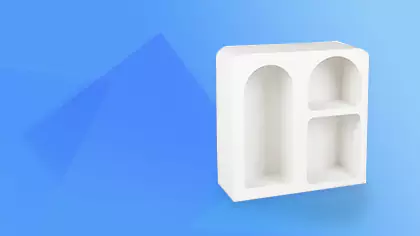
Choosing the right wine storage cabinet with a lock can feel overwhelming. With countless designs, features, and price points on the market, how do you zero in on the perfect solution for your collection? Whether you’re a casual enthusiast who keeps just a few bottles on hand or a serious collector with dozens of rare vintages, security and climate control are paramount. A lockable cabinet safeguards against accidental mishandling, unauthorized access by houseguests or children, and even temperature fluctuations caused by frequent door openings.
In this guide, we’ll walk you through everything you need to know—from why proper wine storage matters to the types of lock mechanisms available, key features to look for, and tips on integrating a cabinet seamlessly into your home. By the end, you’ll have a clear roadmap to selecting a lockable wine cabinet that not only preserves your bottles in ideal conditions but also complements your décor and security needs. Let’s uncork the details.
Understanding the Importance of Secure Wine Storage
Why Wine Needs Proper Storage
Wine is a living beverage. Even after bottling, its flavors and aromas continue to evolve, influenced by environmental conditions. Improper storage—extreme temperatures, excessive light, or erratic humidity—can spoil a bottle, leading to off-flavors like “cooked” notes or sour vinegar-like characteristics. Temperature fluctuations make the liquid expand and contract, which can push the cork out slightly or allow air in, causing oxidation. Over time, oxidation flattens the wine’s structure and dulls its bouquet.
Humidity also plays a crucial role: too dry an environment can dry out corks, again inviting oxygen; too humid, and you risk mold growth on labels and potential cork taint. Finally, UV light from windows or bright bulbs degrades wine pigments and aromatic compounds. That’s why a quality wine cabinet not only locks for security but also offers consistent temperature, humidity regulation, and UV-filtered doors to preserve your collection at its best.
The Role of Temperature, Humidity, and Light
- Temperature: The ideal range for long-term wine storage typically sits between 50–59°F (10–15°C). Some white wines may fare well at slightly cooler temps, while robust reds can weather a degree or two higher.
- Humidity: Aim for 50–70% relative humidity. This keeps corks supple without fostering mold.
- Light: UV rays break down tannins and volatile compounds. Look for cabinets with tinted or UV-protected glass, or solid doors for maximum protection.
A lockable cabinet combines these environmental controls with security, reducing door openings (which disturb conditions) and ensuring only authorized hands handle your bottles. This dual focus—climate control and access restriction—is what makes a lockable wine cabinet a smart investment for serious collectors and casual enthusiasts alike.
Benefits of a Lockable Wine Cabinet
Protection from Unauthorized Access
One of the key reasons to choose a lockable wine cabinet is to prevent unauthorized access. Whether you have curious guests, maintenance staff, or children in the house, a locked cabinet keeps your prized bottles out of reach. No more surprise “sampling” or accidental breakages. The peace of mind that comes from knowing only you (or someone you designate) can open the door is priceless.
Child Safety and Pet Protection
If you have little ones or pets roaming around, a lockable wine cabinet becomes a safety measure. A single gulp of alcohol can be dangerous for children or pets; a secure cabinet prevents accidental ingestion. Additionally, curious pets won’t be able to nudge open a door or topple bottles. It’s a small feature that can avert major mishaps in a busy household.
Maintaining Investment and Collection Value
Rare and vintage wines can represent significant monetary investments. A locked cabinet not only deters casual theft but also discourages unauthorized borrowing—ensuring each bottle remains in your curated collection. Over time, the cabinet’s consistent climate control combined with restricted access helps maintain ideal aging conditions, preserving the wine’s resale or appraisal value if you decide to part with bottles down the road.
Types of Wine Storage Cabinets
Freestanding vs. Built-In Cabinets
- Freestanding Cabinets sit independently and can be placed anywhere with the right power and ventilation. They’re ideal for renters or those who like to rearrange their space.
- Built-In Cabinets integrate seamlessly into cabinetry or walls, offering a flush, professional look. These require precise measurements and proper ventilation planning but can add significant value—and aesthetic appeal—to your Ahome.
Cooled vs. Non-Cooled (Climate-Controlled vs. Passive)
- Cooled Cabinets have refrigeration systems that maintain precise temperatures year-round. These are essential for serious collectors or in climates with significant temperature swings.
- Passive Cabinets rely on ambient room conditions plus design features like insulation and thick walls. They’re more budget-friendly but work best in consistently cool, humidity-controlled environments.
Single-Zone vs. Dual-Zone Cooling
- Single-Zone cabinets maintain one uniform temperature throughout, perfect for collections of similar wine styles.
- Dual-Zone models feature two compartments with independent temperature controls—ideal if you store both reds and whites and want each at its optimal serving temperature.
Key Features to Look for in a Lockable Wine Cabinet
Lock Mechanisms: Key, Combination, Digital
- Key Locks are simple and reliable—just keep track of your key.
- Combination Locks eliminate lost-key worries but require memorizing the code.
- Digital/Electronic Locks often include programmable codes, audit trails, and even remote access via smartphone apps, adding a layer of convenience and high-tech security.
Shelf Design: Adjustable vs. Fixed
- Adjustable Shelves let you accommodate various bottle sizes—Champagnes, magnums, half-bottles—with ease.
- Fixed Shelves often cost less but limit flexibility. For dynamic collections, adjustable designs are almost always the better choice.
Door Types: Solid, Glass, UV-Protected
- Solid Doors block all light, maximizing protection.
- Glass Doors showcase your collection but must be UV-filtered to prevent light damage.
- Frameless vs. Framed: Frameless glass offers a sleek, modern look; framed glass can be sturdier but may feel bulkier.
Sealing and Insulation
A tight door seal prevents warm air and moisture fluctuations. High-density insulation panels in walls and doors also stabilize internal conditions, ensuring minimal drift in temperature and humidity, even if the door is opened frequently.
Materials and Finishes for Wine Cabinets
Wood Cabinets: Types and Advantages
Wood remains the go-to material for wine cabinets, prized for its warmth, durability, and natural insulation properties. Among the most popular choices are oak, walnut, maple, and mahogany:
- Oak: A classic option with a pronounced grain, oak resists warping and is readily available, making it a cost-effective yet elegant choice.
- Walnut: Rich and dark, walnut conveys luxury. It’s slightly softer than oak but still offers good moisture resistance when properly sealed.
- Maple: Light in color with a smooth, subtle grain, maple brightens modern spaces and pairs beautifully with stainless-steel accents.
- Mahogany: Deep red tones and fine grain make mahogany a statement material, though it comes at a premium price.
Wood naturally buffers temperature swings and helps maintain steady humidity, essential for cork health. When selecting wood, look for kiln-dried stock (to minimize residual moisture), veneers that match your décor if solid slabs are out of budget, and eco-certified options (FSC or PEFC) if sustainability is a concern.
Metal Cabinets: Durability and Style
Metal wine cabinets bring an industrial edge and exceptional durability. Common metals include stainless steel, powder-coated steel, and aluminum:
- Stainless Steel: Highly resistant to corrosion, easy to clean, and lends a sleek, contemporary look. It’s heavier but stands up well in humid basements or commercial settings.
- Powder-Coated Steel: Offers color customization and scratch resistance. Whether you want a bold red to match your kitchen or a matte black for a minimalist vibe, powder coating is versatile.
- Aluminum: Lightweight and naturally corrosion-resistant, aluminum cabinets are easier to move and often feature a brushed finish that hides fingerprints and smudges.
Metal cabinets sometimes lack the natural insulation of wood, so ensure they have thick inner lining or double-wall construction. If you’re aiming for an ultra-modern look, metal frames combined with glass doors can create a striking display piece that still secures and conditions your wine.
Glass and Acrylic Elements
Transparent elements let you showcase your collection without compromising security—especially when the glass is UV-filtered or tempered:
- Tempered Glass Doors: Four times stronger than regular glass, tempered panels stand up to knocks and fluctuations without shattering.
- UV-Filtered Glass: Blocks up to 99% of harmful ultraviolet rays, preserving delicate wine pigments and aromas.
- Acrylic: A lighter, shatter-resistant alternative to glass. Acrylic sheets can be clear or tinted and are easier to cut into custom shapes, though they scratch more easily than glass.
When incorporating glass or acrylic, look for low-iron variants (which ensure true color transmission) and sealed edges to prevent light leaks. These materials, combined with metal or wood framing, balance display and defense.
Finishing Options: Stains, Paints, Laminates
The finish you choose impacts both aesthetics and longevity:
- Stains: Penetrate wood to highlight grain patterns. Lighter stains (e.g., honey or natural) suit Scandinavian or coastal themes, while darker stains (e.g., espresso or ebony) feel classic or industrial.
- Paints: Offer limitless color choices. High-quality enamel or chalk-based paints can adhere well to wood and metal, but ensure the surface is properly primed to avoid chipping.
- Laminates & Veneers: A budget-friendly way to mimic exotic woods or bold colors. Laminates are durable and easy to clean, while real wood veneers deliver a more authentic look but require careful sealing.
Beyond color, consider protective topcoats—polyurethane for high-traffic areas, matte varnish for low-glare display, or even water-based finishes for eco-friendliness. A well-chosen finish not only complements your décor but also shields your cabinet from moisture, scuffs, and sunlight over time.











